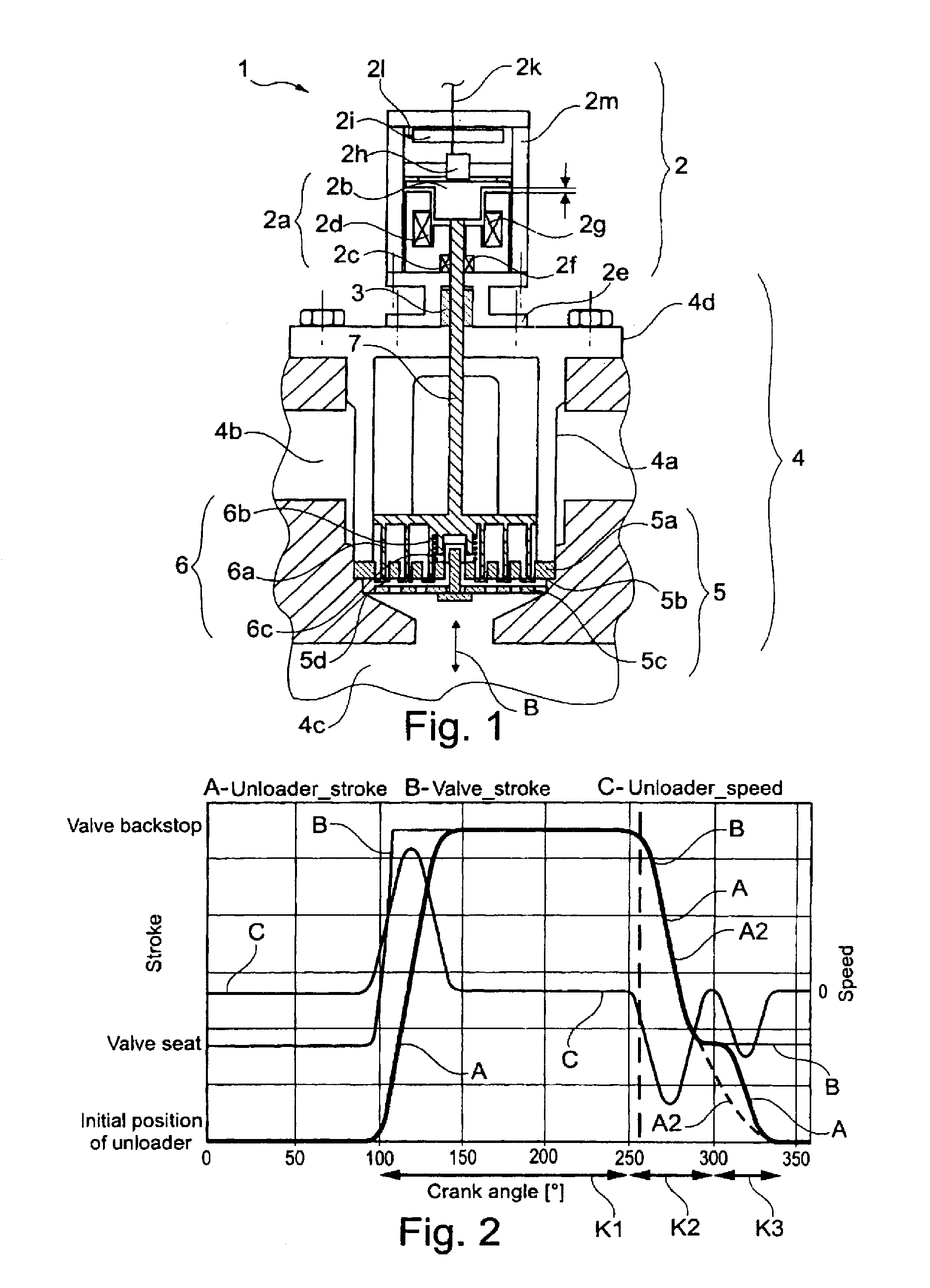Method for Controlling Delivery Quantity, and Reciprocating Compressor Having Delivery Quantity Control
a reciprocating compressor and quantity control technology, applied in the direction of pump components, positive displacement liquid engine, pump control, etc., can solve the problems of high stress-requiring, high maintenance effort, and relatively high wear of the closing body of the intake valve and the pressure valve, so as to achieve the effect of reducing the risk of damage, and improving the service li
- Summary
- Abstract
- Description
- Claims
- Application Information
AI Technical Summary
Benefits of technology
Problems solved by technology
Method used
Image
Examples
Embodiment Construction
[0032]FIG. 1 shows a longitudinal cross-section through a controllable valve 1 comprising a compressor housing 4 with an intake valve 5 arranged therein, whose position is influenced by an unloader 6, wherein the unloader 6 is actuated by a control device 2, arranged outside of the compressor housing 4, via a connection means 7, in the form of a connection rod.
[0033]The compressor housing 4 comprises a lamp 4a, a gas space 4b, a compression space 4c and a cover 4d, wherein the compressor housing 4 also comprises a non-depicted or, as the case may be, an unseen pressure valve 8, via which the compressed fluid may escape from the compression space 4c. The self-acting intake valve 5 comprises a valve seat 5a, a closing body 5b, which is mounted so as to be movable in a stroke direction B and is referred to in the following as valve plate 5b, a valve backstop 5c, as well as a return spring 5d. The unloader 6 comprises a plurality of gripper extensions 6a or fingers 6a, a guide 6b as wel...
PUM
 Login to View More
Login to View More Abstract
Description
Claims
Application Information
 Login to View More
Login to View More - R&D
- Intellectual Property
- Life Sciences
- Materials
- Tech Scout
- Unparalleled Data Quality
- Higher Quality Content
- 60% Fewer Hallucinations
Browse by: Latest US Patents, China's latest patents, Technical Efficacy Thesaurus, Application Domain, Technology Topic, Popular Technical Reports.
© 2025 PatSnap. All rights reserved.Legal|Privacy policy|Modern Slavery Act Transparency Statement|Sitemap|About US| Contact US: help@patsnap.com



